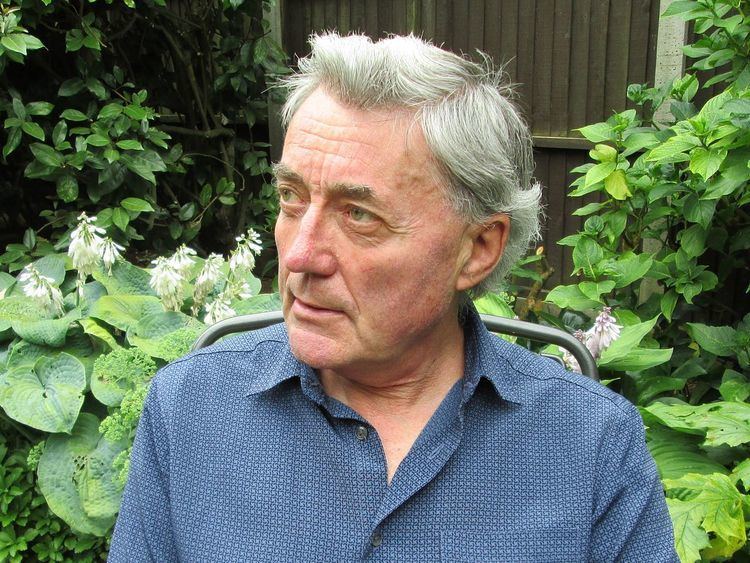Name John Simon | Role Composer | |
 | ||
Miniature woodcut john simon
John Simon (born 12 March 1944) is a British classical composer who grew up in South Africa.
Contents
- Miniature woodcut john simon
- Jacques le sourd john simon and terry teachout
- Education and musical career
- Poetry and music
- Orchestral Works
- Vocal Works
- Literary works
- References
Jacques le sourd john simon and terry teachout
Education and musical career
John Simon studied to be an economist at the University of Cape Town and left South Africa in 1965 as a result of apartheid and came to London where he studied composition part-time at Trinity College of Music and the Royal College of Music. His teachers included James Patten and John Lambert. He taught in the London Borough of Hillingdon for four years (1975–1979) where some of his earlier compositions received their premieres. In 1979 he returned to South Africa at the height of grand apartheid and taught music on the Cape Flats, while maintaining his creative work as composer. His opposition to apartheid led him to compose a series of works that were a response to the events of the time, including the death in custody of Steve Biko. These include his Threnody 1 for strings (subtitled 'Rage, rage against the dying of the light') and Threnody 2 for strings, clarinet and timpani (subtitled 'Steve Biko in Heaven'), (the first piece of serious music to use the current South African national anthem as a theme). Another pair consists of his Requiem for Orchestra (originally entitled 'Requiem of 1984') – a work in which the words of the Latin mass are sung by instruments rather than voices, and his pentagonal Violin Concerto dedicated to the victims of Sharpeville. A later 'struggle' piece was the symphonic suite Children of the Sun (Los Hijos del Sol), a musical depiction of key aspects of the conquest of the Incan Empire by the Spanish. All of these works make use of the opposing elements of serialism and tonality. His Requiem for Orchestra was premiered by the BBC Philharmonic Orchestra, conducted by Edward Downes. Other BBC premières included those of his Violin Concerto and Wind Quintet. Threnody 2 has been widely performed and broadcast, inter alia at the Edinburgh International Festival and the Royal Scottish Academy of Music and Drama in Glasgow.
Other significant orchestral works include his two piano concertos. Piano Concerto No 1 combines serialism with tonality and was written between 1969 and 2003. Piano Concerto No 2, composed between 1977 and 1979, is a tonal work in a more direct contemporary style. His four-movement Symphony, written between 1993 and 1997, has as one of its unifying theme the vibrant rhythms of Africa.
His chamber output consists mainly of works for solo instruments with piano. His most ambitious chamber works are his Wind Quintet of 1973 (UK Première given by the Vega Wind Quintet) and String Quartet of 2011 ('The Scream' inspired by different versions of a painting by Edvard Munch).
His extensive output for solo piano includes five piano sonatas and a number of virtuoso concert solos.
Simon's music is characterised by a predilection for melody, strong rhythm, counterpoint and instrumental colour.
Between 2003 and 2005 he was composer-in-residence to the KwaZulu-Natal Philharmonic Orchestra in Durban and lecturer in orchestration at the University of KwaZulu-Natal's School of Music. He was charged with developing the KZNPO's New Music Initiative whose aim is to bring orchestral skills to KwaZulu-Natal-based composers and arrangers. He orchestrated the cantata Zizi Lethu (Our Hope) by KwaZulu-Natal composer Phelelani Mnomiya, written to celebrate ten years of South African democracy (2004). The work received its European premiere at the Barbican Centre in London where it was performed by the London Symphony Orchestra. This led to a new orchestral composition entitled Dance to Freedom. Other more recent works include A Peal of Bells for D. B. Cooper for strings, tubular bells and celesta; a symphonic suite around the Tristan legend, entitled Fanfares for a Hero; and an anti-war piece called A Cry from a World Aflame for strings, trumpets and percussion.
Poetry and music
Simon has written and published a steady stream of poetry in journals and magazines in South Africa and the United Kingdom. Not surprisingly vocal music features in his output. His most substantial vocal work is his orchestral song cycle 'Portrait of Emily', settings of five of Emily Dickinson's poems. Other poets whose words he has set include Byron, Shelley, John Masefield, Wilfred Owen, Gerard Manley Hopkins and Matthew Arnold.
